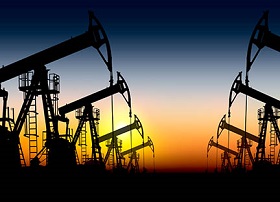Fossil fuel
Fossil fuels are types of non-renewable fuels formed by over millions of years by the anaerobic decomposition of organisms buried beneath or within soil and rock. They are considered to be non-renewable because the rate at which they are currently consumed is far in excess of the rate at which they are naturally replaced, and so they are being rapidly depleted.
Fossil fuels include:
Fossil fuels, contain energy that originated in photosynthesis. They can be burnt in air, or oxygen, to provide heat, which can be used directly, or converted into energy such as electricity. The Industrial Revolution drastically increased the consumption of fossil fuels to the contemporaneous point where levels are widely considered to be unsustainable, hence the drive for large-scale up-take of renewable energy sources.
Types of fossil fuel extraction, such as shale gas, have intensified the debate over whether or not modern and intensive methods should be employed for the further exploitation of non-renewable energy sources.
Burning fossil fuels produces carbon dioxide (and other pollutants) which is a greenhouse gas and so contributes to climate change.
NB Climate Emergency Design Guide: How new buildings can meet UK climate change targets, published by the London Energy Transformation Initiative (LETI) in January 2020, defines a fossil fuel as: 'A natural fuel such as petroleum, coal or gas, formed in the geological past from the remains of living organisms. The burning of fossil fuels by humans is the largest source of emissions of carbon dioxide, which is one of the greenhouse gases that allows radiative forcing and contributes to global warming.'
[edit] Related articles on Designing Buildings Wiki
- Biomass.
- Carbon capture and storage.
- Coal usage for electricity generation to end by October 2024.
- Electric vehicles.
- Energy.
- Liquefied petroleum gas (LPG).
- Mains gas.
- Natural gas.
- Not a choice between renewables and nuclear - we need both.
- Oil - a global perspective.
- Peak oil.
- Phosphorescent building materials.
- Power generation.
- Renewable energy.
- Shale gas.
- Types of fuel.
- Wood pellet mill basics.
Featured articles and news
One of the most impressive Victorian architects. Book review.
RTPI leader to become new CIOB Chief Executive Officer
Dr Victoria Hills MRTPI, FICE to take over after Caroline Gumble’s departure.
Social and affordable housing, a long term plan for delivery
The “Delivering a Decade of Renewal for Social and Affordable Housing” strategy sets out future path.
A change to adoptive architecture
Effects of global weather warming on architectural detailing, material choice and human interaction.
The proposed publicly owned and backed subsidiary of Homes England, to facilitate new homes.
How big is the problem and what can we do to mitigate the effects?
Overheating guidance and tools for building designers
A number of cool guides to help with the heat.
The UK's Modern Industrial Strategy: A 10 year plan
Previous consultation criticism, current key elements and general support with some persisting reservations.
Building Safety Regulator reforms
New roles, new staff and a new fast track service pave the way for a single construction regulator.
Architectural Technologist CPDs and Communications
CIAT CPD… and how you can do it!
Cooling centres and cool spaces
Managing extreme heat in cities by directing the public to places for heat stress relief and water sources.
Winter gardens: A brief history and warm variations
Extending the season with glass in different forms and terms.
Restoring Great Yarmouth's Winter Gardens
Transforming one of the least sustainable constructions imaginable.
Construction Skills Mission Board launch sector drive
Newly formed government and industry collaboration set strategy for recruiting an additional 100,000 construction workers a year.
New Architects Code comes into effect in September 2025
ARB Architects Code of Conduct and Practice available with ongoing consultation regarding guidance.
Welsh Skills Body (Medr) launches ambitious plan
The new skills body brings together funding and regulation of tertiary education and research for the devolved nation.
Paul Gandy FCIOB announced as next CIOB President
Former Tilbury Douglas CEO takes helm.























